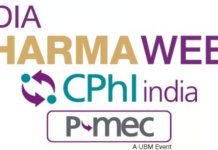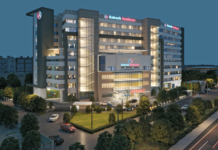New Delhi, June 18, 2019: India Ratings and Research (Ind-Ra) expects the hospital sector to record improved performance in FY20, backed by the reduction of gestation losses in new hospitals. The reduced losses, along with robust demand drivers in new hospitals, will support a sustained improvement in the sector’s overall profitability and deleveraging. However, revenue growth from established hospitals, located mostly in large cities, will be moderate in FY20 due to increased competition.
New Hospitals Turnaround: Most of the hospital players are yet to reach optimum occupancy levels at their newly added capacities resulting in positive-but-low cash flow from operations (CFO) generation. In addition, the companies continue to incur moderate capex in FY20 which is likely to keep free cash flow (FCF) negative. About 65% new beds added by the companies in Ind-Ra’s sample have come up in Tier II or even smaller cities where competition intensity and real-estate costs are lower than those in Tier I cities. Ind-Ra expects the steady operational turnaround in newer hospitals to continue and reach closer to that of established hospitals in the medium term. However, higher exposure to government insurance schemes or adverse regulatory actions can increase the working capital requirements or adversely impact pricing power and result in an elongated period of weak cash flow.
Expansion and Consolidation: A steady decline in bed addition, along with the overall occupancy ratio still hovering around the 60% mark, points to the sector’s moderating capex requirements. The quest for scale benefits is likely to continue to drive consolidation within the sector. Both these trends can boost profitability but can also increase debt levels and adversely impact deleveraging as integration of operations can take two-to-three years from the consummation of acquisition.
Cost Efficiencies Key for Large Players: Gestation losses for longer-than-expected periods owing to the growing competition along with regulatory price controls impacted the profitability growth of established hospitals in FY18-FY19. Input cost inflation, in terms of salaries and consumables, also compressed margins. A declining trend in the average length of stay along with the realignment of the pricing model is likely to help the sector achieve a faster turnaround of newer hospitals and improve the overall profitability. Ind-Ra expects EBITDA margins to expand by 100bp-150bp in FY20.
Deleveraging to be Gradual: Most healthcare companies rated by Ind-Ra recorded high leverage of around 5x over FY16-FY18, mainly due to debt-funded capex which usually takes about two-to-three years to breakeven. However, with capex moderation, a decline in debt and an increase in profitability on the improved performance of newly added capacities, the overall credit metric are likely to improve over the medium term. Companies that have recently started executing major debt-funded expansion plans such as Asian Institute of Gastroenterology Private Limited (‘IND A’/Stable), Manipal Health Enterprises Private Limited (‘IND A’/Negative), Sarvejana Healthcare Private Ltd (‘IND BBB-’/Stable) will have elevated leverage levels during FY20 with a likely improvement thereafter.
Accelerated Shift to Organised Sector to Drive Diagnostic Companies Growth: Increasing quality expectations of consumers are likely to accelerate the share of organised players in the diagnostic sector. While most large diagnostic players derive a major part of their revenues from select cities, over the last two years they have entered new cities through acquisitions. Ind-Ra expects organic revenue growth to be high in the 13%-15% range over the medium term. However, most companies are likely to take the inorganic growth route primarily to increase the coverage for their regional laboratories. Hence, Ind-Ra expects the companies to record high teens blended revenue growth over the medium term.
Corporate Comm India(CCI Newswire)






















